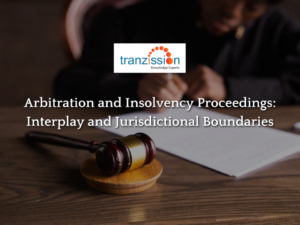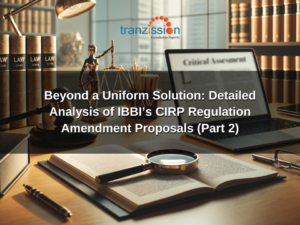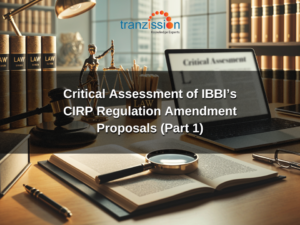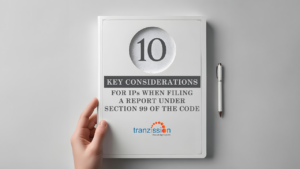
How to crack insolvency examination
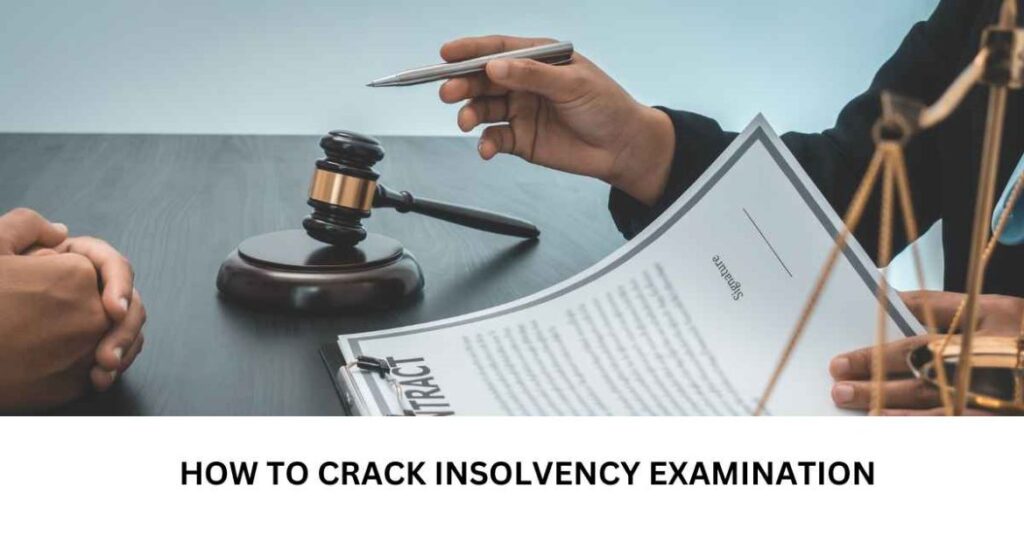
Table of Contents
The Limited Insolvency Examination (LIE) is a crucial exam for individuals aspiring to become insolvency professionals in India. Administered by the Insolvency and Bankruptcy Board of India (IBBI), this examination tests the knowledge and skills necessary to handle insolvency resolution, bankruptcy, and the liquidation process for individuals, companies, and partnerships under the Insolvency and Bankruptcy Insolvency and Bankruptcy Code, 2016. Passing the LIE is a prerequisite for registering as an insolvency professional with the IBBI, allowing professionals to manage the affairs of insolvent entities, individuals and supervise the liquidation and bankruptcy process.
The significance of the LIE extends beyond mere formality to become an insolvency professional. It ensures that only qualified individuals with a thorough understanding of laws and practices related to insolvency and bankruptcy are permitted to manage cases under the Insolvency and Bankruptcy Code, 2016. Given the complex nature of financial distress and bankruptcy cases, possessing a robust foundation in related legal, financial, and economic aspects is essential.
The Importance of Preparation and a Strategic Approach
Achieving success in the LIE demands rigorous preparation and a strategic approach to mastering a wide array of subjects including laws related to insolvency and bankruptcy, business and general laws, finance, economics and general awareness. Aspirants must immerse themselves in intensive study, often complemented by mock tests, comprehensive reading of the latest amendments in laws, and practical case studies to enhance understanding and application.
Effective preparation involves structured study plans focusing on the exam syllabus and pattern, prioritizing weaker areas, and guidance. Ultimately, the diligent pursuit of knowledge and strategic exam preparation are indispensable for aspiring insolvency professionals aiming to navigate the complexities of the LIE and embark on a successful career in this challenging field.
Understanding the Limited Insolvency Examination (LIE)
The Limited Insolvency Examination (LIE) is meticulously structured to assess the comprehensive understanding and practical application skills of aspiring insolvency professionals. The examination’s format and content are designed to ensure candidates are well-prepared to handle real-world insolvency scenarios effectively.
Examination Structure
The LIE consists of a single paper to be taken online, which candidates must complete within a specified duration:
- Duration: The examination is conducted over 2 hours.
- Type of Questions: The paper consists of objective type multiple-choice questions.
- Number of Questions: There are 65 questions in total.
- Total Marks: The examination is for 100 marks.
- Questions Weightage: Questions carry different marks; 30 questions are worth one mark and 35 questions are worth two marks.
- Negative Marking: There is a negative marking of 25% for incorrect answers
Syllabus and Topics Covered
The syllabus for the LIE is comprehensive, covering various crucial topics that provide a theoretical foundation as well as practical insights into insolvency resolution. Key areas of study include:
- Insolvency and Bankruptcy Code, 2016 (IBC): This is the cornerstone of the syllabus, covering the entire code extensively, including its purpose, scope, and application. It addresses the processes for corporate insolvency resolution, corporate liquidation, individual insolvency resolution, and bankruptcy.
- Business and General Laws: Candidates need to study almost 23 business and general laws that interact with or impact the IBC, including:
- The Companies Act, 2013
- The Limited Liability Partnership Act, 2008
- The Indian Partnership Act, 1932
- Laws related to securities, recovery of debts, and enforcement of security interests.
- Case Laws: Understanding 60 important judgments and decisions that have shaped the practice of insolvency law in India is crucial including those of Supreme Court, High Courts, NCLAT and NCLT.
- Regulations and Guidelines Issued by IBBI: It is essential for candidates to be versed in various guidelines, regulations, and directions issued by the IBBI, which govern the functioning and duties of insolvency professionals, insolvency professional agencies, and other entities involved in the insolvency process.
Preparation Strategy for the Limited Insolvency Examination (LIE)
Success in the Limited Insolvency Examination (LIE) requires a meticulous and strategic approach to studying. Each aspirant must develop a personalized preparation plan that accommodates their individual strengths and weaknesses. Following are essential strategies to enhance preparation and increase the chances of success in the examination:
Developing a Tailored Study Plan
- Assessment of Strengths and Weaknesses: Begin by assessing your current understanding of the topics covered in the LIE syllabus. Identify areas where you are strong and topics that require more focus. This self-assessment will help in allocating study time effectively.
- Structured Study Schedule: Create a detailed study plan that covers all the topics in the syllabus. Divide your preparation time between reading the core materials, revising, and testing your knowledge. Allocate more time to complex topics or those where you feel less confident. Minimum 100-120 hours of preparation is required.
- Goal Setting: Set specific, measurable, achievable, relevant, and time-bound (SMART) goals for each study session. This approach helps in maintaining focus and measuring progress throughout your preparation journey.
Importance of Thorough Revision and Practice
- Regular Revision: Regular review of topics is crucial to reinforce learning and ensure retention of information. Develop a revision schedule that allows you to revisit each topic multiple times before the exam.
- Mock Tests: Engage in regular practice with practice tests that simulate the actual exam environment. Practice tests help in familiarizing yourself with the format and time constraints of the LIE. They also aid in identifying areas where you might need further study.
Staying Updated with Recent Developments
- Continuous Learning: The field of insolvency and bankruptcy is dynamic, with frequent updates to laws, regulations, and guidelines. Stay informed about the latest developments by reading journals, newsletters, and updates from the Insolvency and Bankruptcy Board of India (IBBI).
- Engaging with Professional Communities: Participate in forums, discussions, and workshops related to insolvency and bankruptcy. Interaction with peers and experts can provide insights into practical aspects of the profession and updates on recent legal changes.
- Utilizing Reliable Resources: Use Bare acts, online courses, and professional guidance that are recognized and updated regularly. Ensure that the materials you study from are current and comprehensive.
Key Tips for Success in the Limited Insolvency Examination (LIE)
Achieving success in the Limited Insolvency Examination requires not only a deep understanding of the content but also strategic execution during the exam and effective preparation techniques. Here are several key tips to help candidates excel:
Effective Time Management During the Examination
- Plan Your Time: Allocate your time wisely, ensuring that you spend proportionate time on each question based on its marks and complexity. Avoid spending too much time on any single question at the expense of others.
- Prioritize Questions: Tackle the questions you find easiest first to secure quick marks and build confidence. This strategy also saves more time for the challenging questions that may require deeper thought and analysis.
- Keep Track of Time: Regularly check the clock to ensure you are on track with your time allocation. If you find yourself stuck on a question, it’s often better to move on and return to it if time permits.
Leveraging Professional Guidance and Coaching
- Seek Expert Advice: Consult with experienced insolvency professionals who have successfully passed the LIE. Their insights into the exam nuances and practical tips can provide invaluable guidance.
- Join Coaching Programs: Consider enrolling in specialized training programs or preparatory courses for the LIE. These programs provide structured learning, expert lectures, and tailored study materials that focus on the critical aspects of the exam. They also offer practice sessions that mimic real exam conditions, which are crucial for building exam readiness.
- Participate in Study Groups: Engage with peer study groups where you can exchange knowledge, discuss complex topics, and solve problems collaboratively. These groups can also serve as a motivational support system, keeping you committed to your study schedule.
Recommended Study Resources for the Limited Insolvency Examination (LIE)
Preparing for the Limited Insolvency Examination demands access to comprehensive and up-to-date study resources. Aspirants are advised to study from bare acts of all the laws and all effort should be made to have basic conceptual understanding.
Online Courses and Learning Platforms
Tranzission provides an all-encompassing preparation approach for the Limited Insolvency Examination through its SureShot IP Program. This exclusive program is the only one of its kind that encompasses the entire syllabus, offering top-notch study materials and instruction from some of India’s foremost educators in the field. The flagship course delivers thorough coverage of all essential topics for the LIE, featuring video recorded lectures , interactive quizzes, and live sessions led by industry experts to resolve doubts and offer insights into practical insolvency situations.
Additionally, Tranzission has developed the Limited Insolvency Practice Exams, which are crafted to mimic the real exam environment. These practice exams are invaluable tools for candidates to hone their time management skills, pinpoint areas needing improvement, and enhance both accuracy and speed.
How Tranzission Can Help?
Tranzission is committed to providing candidates with all the necessary tools and knowledge required to excel in the Limited Insolvency Examination. Our courses are crafted by seasoned professionals with extensive expertise in the domain, ensuring that learners gain both theoretical and practical understanding. With our comprehensive mix of theoretical content, practical exercises, and expert guidance, candidates are thoroughly prepared not just to pass the LIE but also to succeed in their future careers as insolvency professionals.
By utilizing these resources, candidates can deepen their knowledge of the insolvency sector, stay abreast of the latest legal developments, and significantly improve their confidence and performance in the Limited Insolvency Examination.
Mock Tests and Revision
Effective preparation for the Limited Insolvency Examination (LIE) not only involves studying extensive materials but also regularly assessing one’s knowledge and readiness through mock tests and structured revision. These elements play a crucial role in ensuring success.
Significance of Regular Mock Tests
- Assessment of Preparation Levels: Mock tests provide a clear picture of your current preparation status and help pinpoint areas of strength and weakness. By simulating the pressure and format of the actual exam, they help you gauge how well you might perform under similar conditions.
- Identification of Weak Areas: Regularly taking mock tests allows you to identify specific topics or types of questions where you may need more focus. This targeted approach ensures that your study time is used efficiently, improving areas that could negatively impact your exam performance.
- Time Management: Time constraints can often be a challenge during exams. Mock tests train you to manage your time effectively, ensuring that you can complete all questions within the allotted time without rushing through them.
- Familiarity with Exam Format: Familiarity with the exam structure and types of questions asked reduces anxiety and increases confidence. Mock tests provide this familiarity, making the actual exam experience less daunting.
Strategies for Effective Revision
- Creating Concise Notes: One of the most effective revision techniques is the creation of concise, easy-to-review notes during your initial study sessions. These should highlight key points, important legal provisions, case law summaries, and critical takeaways from each topic.
- Regular Review Sessions: Schedule regular review sessions that focus on revisiting the concise notes and any additional summaries you have created. This frequent repetition aids in better retention and recall of information.
- Use of Visual Aids: For many learners, visual aids such as charts, diagrams, and mind maps can simplify complex information and improve memory retention. These tools are particularly useful for visualizing relationships between different parts of the Insolvency and Bankruptcy Code and other related legislation.
- Practice with Purpose: During revision sessions, practice answering questions that are structured similarly to those in the exam. This not only helps in applying theoretical knowledge but also in understanding how to structure answers effectively.
- Scheduled Breaks and Balanced Study: Ensure that your revision timetable includes adequate breaks to prevent burnout. A balanced approach to studying and revision helps maintain focus and productivity over longer periods.



